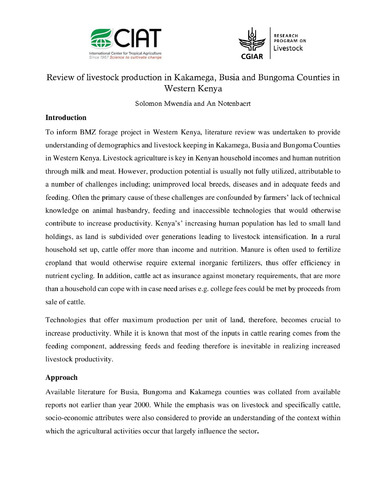Review of livestock production in Kakamega, Busia and Bungoma Counties in Western Kenya
To inform BMZ forage project in Western Kenya, literature review was undertaken to provide understanding of demographics and livestock keeping in Kakamega, Busia and Bungoma Counties in Western Kenya. Livestock agriculture is key in Kenyan household incomes and human nutrition through milk and meat. However, production potential is usually not fully utilized, attributable to a number of challenges including; unimproved local breeds, diseases and in adequate feeds and feeding. Often the primary cause of these challenges are confounded by farmers’ lack of technical knowledge on animal husbandry, feeding and inaccessible technologies that would otherwise contribute to increase productivity. Kenya’s’ increasing human population has led to small land holdings, as land is subdivided over generations leading to livestock intensification. In a rural household set up, cattle offer more than income and nutrition. Manure is often used to fertilize cropland that would otherwise require external inorganic fertilizers, thus offer efficiency in nutrient cycling. In addition, cattle act as insurance against monetary requirements, that are more than a household can cope with in case need arises e.g. college fees could be met by proceeds from sale of cattle.
Technologies that offer maximum production per unit of land, therefore, becomes crucial to increase productivity. While it is known that most of the inputs in cattle rearing comes from the feeding component, addressing feeds and feeding therefore is inevitable in realizing increased livestock productivity.

